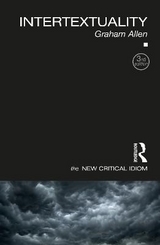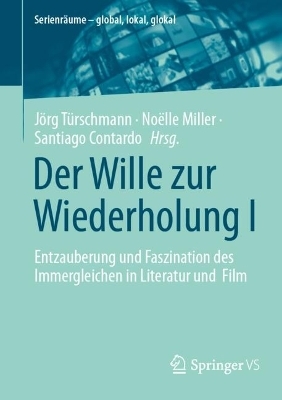
Intertextuality
Seiten
2011
|
2nd edition
Routledge (Verlag)
978-0-415-59694-7 (ISBN)
Routledge (Verlag)
978-0-415-59694-7 (ISBN)
- Titel erscheint in neuer Auflage
- Artikel merken
Zu diesem Artikel existiert eine Nachauflage
Graham Allen's Intertextuality follows all the major moves in the term's history, and clearly explains how intertextuality is employed in a variety of theories from structuralism to deconstruction, marxism to psychoanaysis.
Theories of intertextuality suggest that meaning in a text can only ever be understood in relation to other texts; no work stands alone but is interlinked with the tradition that came before it and the context in which it is produced. This idea of intertextuality is crucial to understanding literary studies today.
Graham Allen deftly introduces the topic and relates its significance to key theories and movements in the study of literature.
The second edition of this important guide to intertextuality:
outlines the history and contemporary use of the term
incorporates a wealth of illuminating examples from literature and culture
includes a new, expanded conclusion on the future of intertextuality
examines the politics and aesthetics of the term
relates intertextuality to global cultures and new media.
Looking at intertextuality in relation to structuralism, post-structuralism, deconstruction, postcolonialism, Marxism, feminism and psychoanalytic theory, this is a fascinating and useful guide for all students of literature and culture.
Theories of intertextuality suggest that meaning in a text can only ever be understood in relation to other texts; no work stands alone but is interlinked with the tradition that came before it and the context in which it is produced. This idea of intertextuality is crucial to understanding literary studies today.
Graham Allen deftly introduces the topic and relates its significance to key theories and movements in the study of literature.
The second edition of this important guide to intertextuality:
outlines the history and contemporary use of the term
incorporates a wealth of illuminating examples from literature and culture
includes a new, expanded conclusion on the future of intertextuality
examines the politics and aesthetics of the term
relates intertextuality to global cultures and new media.
Looking at intertextuality in relation to structuralism, post-structuralism, deconstruction, postcolonialism, Marxism, feminism and psychoanalytic theory, this is a fascinating and useful guide for all students of literature and culture.
Graham Allen lectures on Romantic and Victorian literature, and literary theory at University College, Cork. He is author of Harold Bloom: A Poetics of Conflict, Roland Barthes (Routledge Critical Thinkers), Mary Shelley, The Reader's Guide to 'Frankenstein', and editor of The Salt Companion to Harold Bloom (with Roy Sellers) and Reading on Audience and Textual Materiality (with Carrie Griffin and Mary O'Connell).
Introduction 1. Origins: Saussure, Bakhtin, Kristeva 2. The Text Unbound: Barthes 3. Structuralist Approaches: Genette and Riffaterre 4. Situated Readers: Bloom, Feminism, Postcolonialism 5. Postmodern conclusions Conclusion ‘The Futures of Intertextuality’ Glossary Bibliography Index
| Reihe/Serie | The New Critical Idiom |
|---|---|
| Verlagsort | London |
| Sprache | englisch |
| Maße | 129 x 198 mm |
| Gewicht | 520 g |
| Themenwelt | Geisteswissenschaften ► Sprach- / Literaturwissenschaft ► Anglistik / Amerikanistik |
| Geisteswissenschaften ► Sprach- / Literaturwissenschaft ► Literaturwissenschaft | |
| ISBN-10 | 0-415-59694-7 / 0415596947 |
| ISBN-13 | 978-0-415-59694-7 / 9780415596947 |
| Zustand | Neuware |
| Haben Sie eine Frage zum Produkt? |
Mehr entdecken
aus dem Bereich
aus dem Bereich
Poetik eines sozialen Urteils
Buch | Hardcover (2023)
De Gruyter (Verlag)
CHF 83,90
Entzauberung und Faszination des Immergleichen in Literatur und Film
Buch | Softcover (2024)
Springer Fachmedien Wiesbaden GmbH (Verlag)
CHF 118,95
Buch | Softcover (2024)
belleville (Verlag)
CHF 27,95



